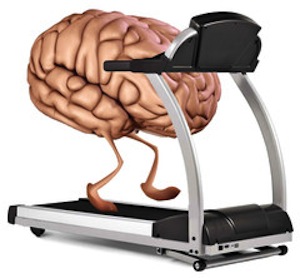We all know that exercise is important for optimal health. Countless studies have demonstrated the link regular exercise and good cardiovascular health,[1] and maintaining our ideal weight and physique is a lost cause without an ongoing commitment to fitness.
But in today’s busy world, it can be difficult to make time for exercise (especially more than the 2.5 hours per week that is considered the minimum requirement by the U.S. government). As evidenced by the prevalence of stress-related diseases, society’s first priority is work—not health maintenance.
Work used to afford us more opportunity for moderate movement and exercise. For example, in 1820, farmers comprised a whopping 72% of the American workforce (today, only 15% of the workforce farms).[2] Today, less than 20% of all jobs in the U.S. involve physical activity[3]—for the vast majority of us, work life is sedentary.
The result of this trend is obvious: obesity, diseases of inflammation, and other conditions brought on by a sedentary lifestyle have all spiraled out of control. You may have heard that “sitting is the new smoking”—multiple hours of uninterrupted sitting increases the risk of a vast array of conditions. Sitting for six hours or more even cancels out an hour of daily strenuous exercise.
But if all of these dangers haven’t yet convinced you to make time every day for movement and exercise, here’s one more reason to add to the list: sufficient exercise dramatically increases overall cognitive function, while a sedentary lifestyle leads to poor memory, increased risk of dementia, and brain shrinkage.
If you work in business, the arts, or some other mentally stimulating profession, the tendency is to put off exercise, for fear that it will steal attention from mental activities. But, as many studies have demonstrated, taking the time to move is one of the best possible things you can do to keep your brain sharp.
This is your brain on exercise
Just think of what happens to your body when you exercise—you shed excess fat, excrete toxins more efficiently, build muscle, increase the integrity of your skeletal structure, and boost metabolism. In short, you develop your body into a strong, well-oiled machine capable of adapting to whatever life throws at it.
Exactly the same is true of the brain. Studies show that exercise promotes neurogenesis, the growth of new brain cells. This process allows the brain to be more dynamic and adaptive, which means it functions at a higher level, resists the shrinkage and degeneration that’s often considered an inevitable part of growing old, and performs better with regard to memory and learning.[4]
Some experts even believe that the dearth of exercise in our society could explain why diseases of cognitive degeneration are on the rise. Contrary to previously held medical beliefs, it seems that the brain is fully capable of regenerating itself throughout your entire life—provided that it’s fueled and supported by proper diet and exercise.
Regular exercise increases grey matter in the hippocampal region of the brain (the one that’s implicated in memory and similar functions),[5] helps prevent deterioration in the frontal, parietal, and temporal cortexes,[6] and helps preserve overall memory and learning functions well into old age.[7]
Even isolated strength training is directly linked with increased brain function. One group of researchers found that “leg strength [is] a better predictor of brain health than any other lifestyle factor,”[8] and muscle-building exercises have also been shown to catalyze the release of a whole host of hormones, growth factors, and proteins that are potent brain stimulators.
Even just walking and moving around throughout the day—anything to prevent long periods of uninterrupted sitting—is immensely beneficial for your brain.
In the absence of this kind of prudent movement and exercise practice, the brain quickly begins to deteriorate. Studies have conclusively shown that people who don’t exercise enough have lower brain tissue volume[9] and suffer much more acutely from cognitive decline as they begin to age.[10]
The ideal brain-boosting exercise regimen
Let’s start with the minimum 2.5-hour per week requirement mentioned above: that breaks down to thirty minutes of moderate to strenuous exercise, five days per week (if your exercise tends to be moderate rather than strenuous, seven days per week is better).
Remember, though, that this is the minimum, and that sitting for six hours or longer on a daily basis can undo even an hour of strenuous exercise. This means that, if you sit at a desk all day and then go for an hour run, you’re still barely scraping by.
What you really need to do is maintain frequent movement throughout your day, even if it’s at a low level of exertion. Stand up (or squat) whenever you can, and take “movement breaks” once every hour. Even just ten minutes of movement every hour can counteract the risks of prolonged sitting.[11]
Ideally you want to aim to take 7,000-10,000 steps every day (in addition to the thirty minutes of moderate to strenuous exercise, if at all possible). You can accomplish this by taking a leisurely one-hour walk at the beginning or end of the day, by walking on a treadmill (or around the block) during all of your movement breaks, or by engineering ways of walking more in between your tasks (using the stairs instead of the elevator, walking to the grocery store, etc.).
Last but not least, do your best to work in at least two strength training routines per week—the resulting hormone cascade makes all of your other exercise even more effective (and it confers the benefits mentioned above).
Fitting this much physical activity into your week might sound daunting, but it’s well worth the effort. And once you try it for a little while, you’ll be hooked—the boost in energy, vitality, mood, and cognitive function will be all the incentive you need to stick with it.
References
[1] http://circ.ahajournals.org/content/107/1/e2.full
[2] http://www.nytimes.com/1988/07/20/us/farm-population-lowest-since-1850-s.html
[3] http://www.heart.org/HEARTORG/HealthyLiving/PhysicalActivity/FitnessBasics/The-Price-of-Inactivity_UCM_307974_Article.jsp#.Vtc6kpwrLb0
[4] http://www.nytimes.com/2012/04/22/magazine/how-exercise-could-lead-to-a-better-brain.html?_r=3&pagewanted=all
[5] http://www.nature.com/articles/srep03457
[6] http://biomedgerontology.oxfordjournals.org/content/61/11/1166.short?rss=1&ssource=mfr
[7] https://www.karger.com/Article/FullText/441029
[8] http://www.medicinenet.com/script/main/art.asp?articlekey=191825
[9] http://www.neurology.org/content/early/2016/02/10/WNL.0000000000002415.short
[10] https://www.kcl.ac.uk/newsevents/news/newsrecords/2015/November/Fitter-legs-linked-to-a-fitter-brain.aspx
[11] http://fitness.mercola.com/sites/fitness/archive/2014/09/19/intermittent-movement-prolonged-sitting.aspx






